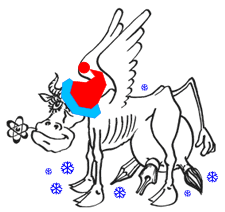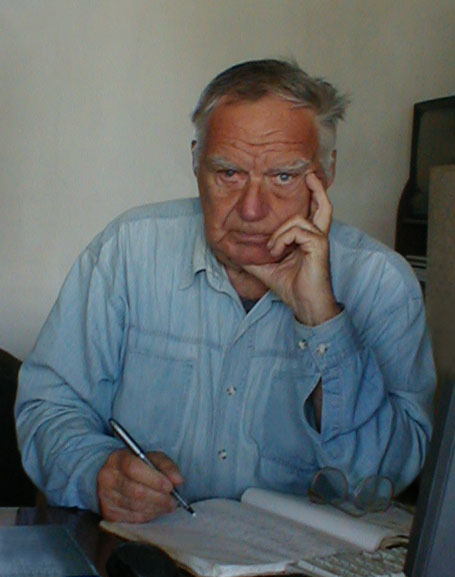Table of Contents
Read Book from " Pdf - OnLine " ( Yumpu, 7.5 Mbyte )
( The Whole Book )
Front Matter
1 Introduction
1.1 Astrophysics and astronomical measurements
1.2 The basic postulate of astrophysics
1.3 The another postulate
1.3.1 Thus two postulates can be formulated.
Which of these postulates
is correct ?
1.3.2 The Galileo's method
1.3.3 What does the the astronomic measurement data express ?
1.4 About a star theory development
2 The energy-favorable state of hot dense plasma
2.1 The properties of a hot dense plasma
2.1.1 A hot plasma and Boltzman's distribution
2.1.2 The correction for the Fermi-statistic
2.1.3 The correction for correlation of particles
2.2 The energy-preferable state
2.2.1 The energy-preferable density
2.2.2 The energy-preferable temperature
2.2.3 Are accepted assumptions correct ?
3 The gravity induced electric polarization
3.1 Plasma cells
3.2 The equilibrium of a nucleus
3.3 The equilibrium in electron gas subsystem
4 The internal structure of a star
4.1 The plasma equilibrium in the star core
4.2 The main parameters of a star core
4.3 The equilibrium inside the star atmosphere
4.4 The radial dependence of density and temperature
4.5 The mass of the star
5 The main parameters of star
5.1 The energy of a star
5.1.1 The kinetic energy of plasma
5.1.2 The potential energy of star plasma
5.2 The temperature of a star core
5.2.1 The energy of the black radiation
5.2.2 The full energy of a star
5.3 Main star parameters
5.3.1 The star mass
5.3.2 Radii of stars
5.3.3 The R?=R0 ratio and R0
5.3.4 The temperature of a star surface
5.3.5 The comparison with measuring data
6 The thermodynamic relations
6.1 The thermodynamic relations
6.1.1 The cP =cV ratio
6.1.2 The Poisson's adiabat
6.2 The mass-radius ratio
6.3 The mass-temperature-luminosity relations
6.3.1 The compilation of the results of calculations
7 Magnetic Felds of stars
7.1 Magnetic moments of stars
7.2 Magnetic �elds of stars
8 The apsidal rotation
8.1 The apsidal rotation
8.2 The equilibrium form of the core
8.3 The angular velocity .
8.4 The comparison with observations
9 The solar seismical oscillations
9.1 The spectrum of solar oscillations
9.2 The sound speed in plasma
9.3 The basic elastic oscillation
9.4 The low frequency oscillation
9.5 The spectrum of solar oscillations
10 A mechanism of stabilization for neutron-excess nuclei in plasma
10.1 Neutron-excess nuclei and the neutronization
10.1.1 The electron cloud of plasma cell
10.2 The Thomas-Fermi screening
10.3 The screening with relativistic electrons
10.4 The neutronization
11 Other stars
11.1 The atomic substance
11.1.1 Small bodies
11.1.2 Giants
11.2 Plasmas
11.2.1 Stars
11.2.2 Planet
11.2.3 The cold relativistic substance
11.2.4 Quasars
11.2.5 About the cosmic object categorizations
11.3 Several words about star evolution
11.4 About " black holes "
12 The Theory of Earth
12.1 The introduction
12.2 Equation of state
12.3 The core and the mantle
12.4 The energy of a planet
12.5 The density distribution inside the Earth
12.6 The moment of inertia and the magnetic moment of the Earth
13 The conclusion
Bibliography
Back Matter
|
|
Author(s)
Boris V. Vasiliev was born in 1937 in Ekaterinburg ( Russia ).
His father - Vasilyi Volkov, scientist - geophysics - was killed during the Stalinist purges of 1937.
His mother - Nina A. Vasilieva raised her three children and gave them the higher education by herself after the death of her husband .
Boris Vasiliev graduated from the Physical-Techical Department of the Ural Polytechnic Institute and was postgraduate of Kurchatov Institute
( supervisor - Academician Isaak K. Kikoine ). PhD ( 1968 ), Dr. Sci. Sciences ( 1984 ). Author of over 100 scientific papers and several books.
He started to work as a research engineer and came to the Director of the Research Institute in Dubna for more 35 years.
His main achievements :
* The description of the super-phenomena - superconductivity and superfluidity - as a consequence of ordering zero-point oscillations.
* The theory of hot stars, built taking into account the gravity-induced electric polarization intrastellar plasma.
* The theory of Earth's magnetic field.
* The electromagnetic model of neutron and quantum mechanical nature of nuclear forthes.
* Electromagnetic nature of neutrinos.
* Discovery and study of thermo-magnetic effect in metals.
* The theory rf-SQUID.
* The experimental determination of the upper limit of the existence of an electric dipole moment of the electron,
in violation of CP and T invariance (the measurement results entered in the directory on the properties of elementary particles).
Annotation
Astrophysics = the star physics was beginning its development without a sup-
porting of measurement data, which could not be obtained then. Still astrophysics
exists without this support, although now astronomers collected a lot of valuable
information. This is the main difference of astrophysics from all other branches of
physics, for which foundations are measurement data. The creation of the theory
of stars, which is based on the astronomical measurements data, is one of the main
goals of modern astrophysics. Below the principal elements of star physics based on
data of astronomical measurements are described. The theoretical description of a
hot star interior is obtained. It explains the distribution of stars over their masses,
mass-radius-temperature and mass-luminosity dependencies. The theory of the ap-
sidal rotation of binary stars and the spectrum of solar oscillation is considered.
All theoretical predictions are in a good agreement with the known measurement
data, which con�rms the validity of this consideration.
|

















